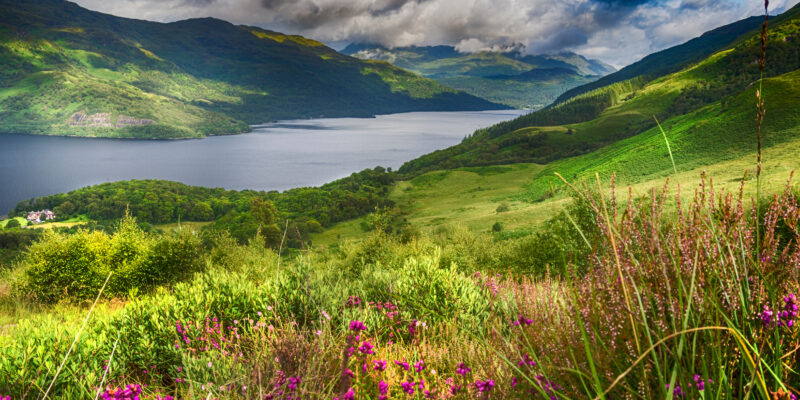Did your plans this summer include, climbing Arthur’s seat, visiting Nessie at Loch Ness, or cycling in the Cairngorms? If so, you will have visited some of Scotland’s most nationally and naturally important sites.
Arthur’s Seat, Loch Lomond and the Cairngorms are all examples of some of Scotland’s Statutory Designated areas. Statutory Designations can also (and, indeed, do) apply to much smaller sites, if you live near a loch, by the sea front, or at the foot of a hill, for example, your own back garden may be a Statutory Designated area.
Statutory Designations are assigned to areas of land and bodies of water that are thought to be Scotland’s most naturally important and impressive sites. One of the main reasons for designating these areas is to protect and conserve these special landscapes for the benefit of the public as a whole.
Three of the key national designations, based upon formal statutory procedures, are summarised below.
Sites of Special Scientific Interest (“SSSI”)
- In Scotland, SSSIs are a statutory designation made by NatureScot (formerly Scottish Natural Heritage) under the Nature Conservation (Scotland) Act 2004.
- At present, approximately 12.6% of Scotland’s land area is designated as a SSSI, and most of this land is held within private ownership.
- SSSI designated sites are said to contain the absolute best flora, fauna, rock formations and landforms that Scotland has to offer.
- Due to their prestige, intentional or reckless damage to the protected characteristics of SSSI sites is an offence.
- To ensure that these sites are appropriately protected and conserved, NatureScot is obliged to provide owners and occupiers of land within an SSSI with a site management statement, which not only identifies the special features of the site, but also describes what protective management is needed.
- In addition, NatureScot is required to identify activities that are likely to cause damage to the natural features of the SSSI site, and these activities are listed as Operations Requiring Consent (“ORC”), relative to each site. Owners and occupiers of SSSI designated land must apply to NatureScot for consent to carry out any ORC. NatureScot will then work with these parties to find a compromise to allow this activity to go ahead – or they may decide to refuse consent or issue consent with conditions attached.
- Owners of SSSI sites are required to inform NatureScot if they dispose of SSSI designated land or if there are any new occupiers. In addition, they must also tell the new owner or occupier about the SSSI.
National Park
- Scotsman John Muir is praised for having the vision that helped to pioneer the concept of National Parks in America. There are now over 60 National Parks in America associated with his legacy.
- Somewhat surprisingly, Scotland only has two National Parks at present: Loch Lomond and The Trossachs, which was established in 2002 and the Cairngorms, which was established in 2003 and then expanded in 2010.
- Despite this small number, Scotland’s National Parks are home to some of Scotland’s greatest natural and cultural resources.
- The main piece of legislation in this area is the aptly named: National Parks (Scotland) Act 2000.
- This legislation sets out four aims for our National Parks, all of which are centred around conserving the natural area while also promoting sustainable use and enjoyment of the site and the surrounding communities.
- The legislation also sets out the three conditions that an area proposed for National Park designation must meet, and it further lays out the process for establishing any new National Park. This process is fairly rigorous, and it involves a proposal by the Scottish Ministers and a public consultation, to name only a few steps.
- Although the Isle of Harris was rejected as a National Park in 2011, the Scottish government has pledged at least one new park will be designated by spring 2026.
National Nature Reserve (“NNR”)
- At present, Scotland has 43 NNRs – covering just less than 2% of our land area.
- NNRs vary from areas such as remote islands, to mountain tops, and even ancient woodlands.
- A body, known as the NNR Partnership, assesses sites and recommends those that they deem worthy of the NNR accolade to NatureScot, who, in turn, can formally declare sites as NNRs under the National Parks and Access to the Countryside Act 1949 and the Wildlife and Countryside Act 1981.
- The NNR accolade is said to be given only to the most special places for people to see the very best that nature has offer.
- In the absence of a list of attributes that makes an area ‘special’, NatureScot has confirmed that the NNR accolade is given to areas that have the wow factor.
- Inherent in NNRs is the idea that, while wildlife conservation and control is the principal focus, individuals should be encouraged to enjoy these special places. In order to facilitate this aim, NNRs often have visitor centres and trails, specifically designed to maximise public engagement and enjoyment while minimising any disturbance to nature.
- Private landowners can also operate NNRs, and indeed they may benefit from doing so as the NNR accolade and associated promotion may increase interest and attract support.
So, which Statutory Designated areas do you plan to visit yourself this year?
To find out what areas are designated as SSSIs, National Parks, and NNRs, please view the interactive map at: SiteLink (nature.scot).
For more information on all the above topics please visit:
- Sites of Special Scientific Interest (SSSIs) | NatureScot
- National Park | NatureScot
- Home | Scotland’s National Nature Reserves (nnr.scot)
If you have any questions regarding Statutory Designations, would like to know more about applying to have your land Designated or if you have any concerns about Designated land that you currently own, please do get in touch with our Land & Rural Business team.


